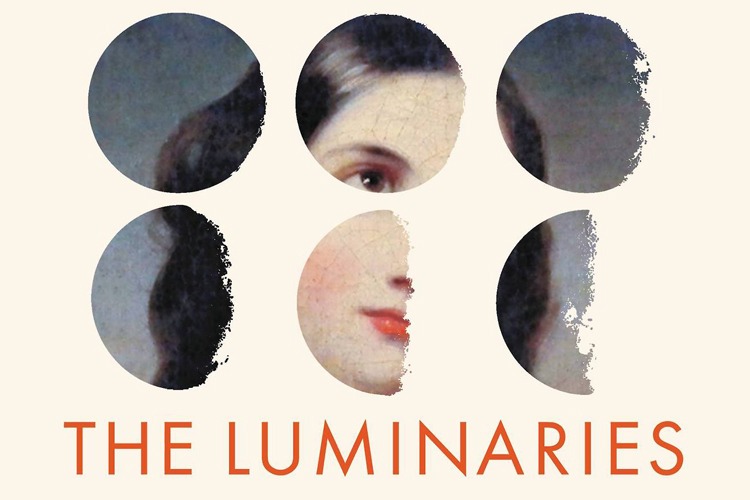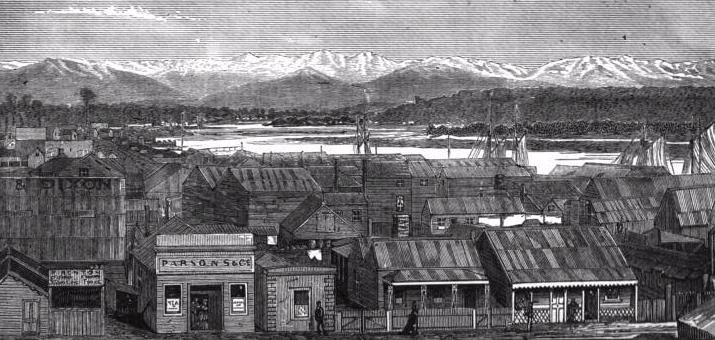
I have to admit, I feel quite a sense of accomplishment at having finally finished The Luminaries. Two weeks ago, I decided to review the book that has taken the literature world by storm. Not only did Eleanor Catton’s novel win the 2013 Man Booker Prize, she is the youngest writer ever to have received the prestigious literature award and it’s the longest book (832 pages) to ever have won.
The Luminaries, published by Victoria University Press (Aug. 2013), is Catton’s second novel. Her debut novel The Rehearsal (Victoria University Press 2008) was her Master’s thesis and is about a love affair between a male music teacher and a high school student. It also won a range of awards, a mark that Catton was a writer to follow.
If a challenge is what you seek, or what you need to suck you away from the daily challenges, politics, and traffic of Egypt, then a challenge is what you will get when reading The Luminaries. You will find yourself making notes, rereading chapters and desperate to unravel the mystery, which Catton masterfully reveals very slowly, so that you never have quite the full picture til the end. The narrative structure is cunning and it’s how Catton keeps the reader hooked throughout the eight hundred pages.
Take on the challenge and let Catton take you back in time to Hokitika, New Zealand in the 1860s. Hokitika was founded on gold mining as the center of the West Coast Gold Rush. The historical suspense novel is similar to Victorian sensation novels, but set in New Zealand which makes it truly a unique experience.

Catton tells a tale of nineteen characters: an elaborate mix of Europeans, a Chinese gold smelter (Quee Long), a Chinese opium den manager (Ah Sook) and one Maori greenstone hunter (Te Rau Tawhare). There is an astrological complexity which is added, so each character corresponds to one of the twelve horoscopes and the other seven have “planetary” characters.
For example, there’s the Leo pimp Dick Mannering and the Scorpio chemist/drug dealer Joseph Pritchard. All these characters – plus the Godspeed Ship, the Aurora gold mine, the vanished wealthiest man Emery Staines, the missing gold/bonanza, the drugged whore who attempted suicide and the alcoholic hermit who was murdered – create a whodunit story that you won’t be able to put down.
All of the European names have a Dickensian feel: Cowell Devlin the Irish priest, George Shepard the jailer, Thomas Balfour the shipping agent, Walter Moody the Scottish barrister. The novel starts with Moody arriving at the Crown Hotel’s cigar-filled room in Hokitika and meeting twelve men in discussion of a murder, a disappearance and a woman, which automatically intrigues the reader and gives parallels of The Last Supper.
Each character is so detailed that by the end, I felt that I could recognize them in the street, provided that I was in 19th century New Zealand that is. The language Catton used interchanged from the colloquial of the rough neck gold diggers to the refined tongue of well educated characters like the Jewish Benjamin Lowenthal, who’s also a Gemini and editor in chief of the West Coast Times.

To understand what Hokitika was like, Catton provides descriptions through the characters that are quite revealing. The gold rush was believed to create a moral scourge and in Hokitika, “Every man had his currency,” Aubert Gascoigne, the French Magistrate’s clerk who’s a Capricorn, pointed out.
“There were so few children in Hokitika – perhaps three or four,” Joseph Pritchard explained when he was saddened by Anna having lost her child. Ah Sook and Quee Long, when they were discussing how they must stick together and have each other’s back, lamented that “Chinese life is cheap in this country.” Actually, “All life is cheap upon a goldfield.”
Crosby Wells, the alcoholic hermit who’s represented by the “Earth” character explained it best: “I fancy that it is the thought of men like me becoming rich that has most politicos afraid”. Hokitika was an opportunity for men to rise. “The frontier I think makes brothers of us all.” Everyone had skeletons in their closets, everyone wanting to start anew, to forget the past, and get rich fast.
At times I felt like I must be on opium, too, because of the combination of both confusion and intrigue, wanting to know the rest of the story. So I read on like an addict trying to understand and comprehend the secrets that Catton unfolds.
The evil masterminds of the plot were Francis Carver, the scar-faced ex-con Captain of the Godspeed, and Lydia Wells. She was the skillful con artist and alluring “Venus” fortune teller who had married three men: Wells, Lauderback and Carver.
Catton eloquently describes so much of the landscape of the Arahura Valley, the mountains, the rivers, Dunedin, Hokitika that the picturesque New Zealand really comes to life.

In one of Well’s letters to Lauderback, he describes the location of his cottage: “The house is roofed in iron and set back thirty yards from the banks of the Arahura on that river’s Southern side. There is a clearing of some thirty yards on either side of the cottage and the sawmill is some twenty yards further to the Southeast. The dwelling is a small one with a widow and a chimney made of clay-fired brick. It is clad the usual way.”
One of my favorite parts is when Walter Moody discovers Wells’ letters to his brother Alistair Lauderback. These letters span from 1852 till his death in 1866. Through them, many of the mysteries are revealed and for the first time you start to understand Wells and the silence of Lauderback. These letters broke my heart.
Another masterpiece within the story is the court case conducted by Moody as the defendant of Emery Staines and Anna Wetherell and Lawrence Broham for the plaintiffs of the Magistrate’s court. This court case brings together the whole story and fills any voids or misunderstandings of the events up until that point. This clarification enables the reader to finally put the pieces of the puzzle in place.
The book is divided into twelve parts. The first is the longest at 360 pages. Some critics think the numbering is intentional, signifying 360 degrees. The shortest part is the last, and Catton says that the progression is representative of the lunar cycle, where the beginning is the full moon. So if you accept the challenge and reward that is The Luminaries, I wish you luck and bid you to start on a night with a full moon.
WE SAID THIS: Check out Sherine’s last book review: Did You Try Qat?


